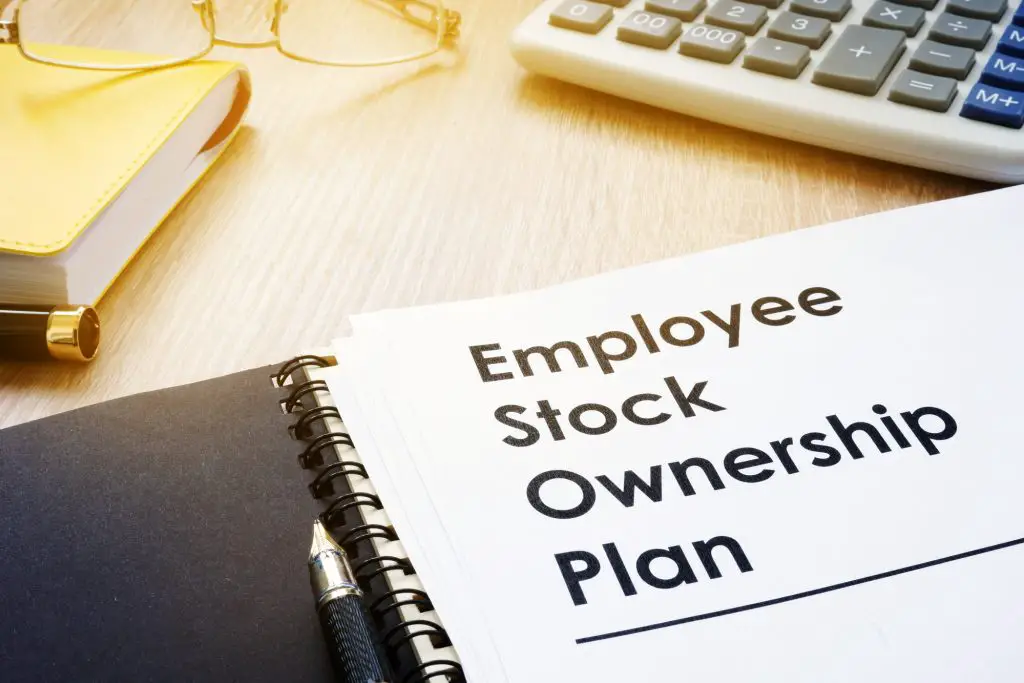 There are two important challenges that every small business owner should know.
There are two important challenges that every small business owner should know.
One: According to the Workest, retaining good employees is a very big problem for small businesses today; how can this be addressed?
Two: According to the House’s Committee on Small Business, there are 2.3 million business owners who are at or near retirement age; who is going to buy them out?
One solution for both challenges is an employee stock ownership plan (ESOP).
What’s an ESOP?
An employee stock ownership plan (ESOP) is a type of qualified plan designed to invest primarily in employer stock. Much like any qualified retirement plan, it must meet various rules for nondiscrimination so that employees participate fairly.
An ESOP is set up as a trust into which corporate stock is contributed or purchased. The ESOP can borrow money to buy the stock; the corporation contributes cash to enable the loan to be paid off. (The House’s committee recently held hearings on the difficulty of small business borrowing for this purpose.) The company deducts contributions up to a set limit (30% of EBITDA, which is earnings before interest, taxes, depreciation, and amortization; after 2021, 30% of EBIT, which is earnings before interest and taxes).
Because the employer must have stock, the company must be a corporation (it can be an S corporation with special rules for an S-ESOP noted below). In other words, the business can’t be used by a limited liability company because this entity doesn’t issue stock to owners.
In general terms, an ESOP is a way for small business owners to transfer ownership over time to their employees on a tax-advantaged basis. Both the IRS and the Department of Labor have various rules governing the operation of ESOPs. They’re technical, they’re tricky, and require the assistance of experts to ensure that the intended results are achieved.
Benefit to owners
Owners that have no intention of retiring or selling their businesses benefit by giving some ownership interest to their employees. It’s a way of retaining them and making them more productive (they’re working for themselves). The owner’s interest becomes diluted by having stock issued to the ESOP, but because of the tax write-offs, it can help the company’s cash flow.
For those owners who want out, the ESOP can be used to buy their shares, creating a ready market for a privately-held business. And they can obtain a special tax break described below.
How it works
To enable the ESOP to have the funds necessary to buy the shares, the ESOP can borrow money. The company contributes the cash to the ESOP and deduct the contribution (effectively deducting what’s used to pay both interest and principal on the loan). In an ESOP of a C corporation (but not an S corporation), once ownership reaches 30%, then the seller (the owner) can reinvest the proceeds of the sale in other securities to defer tax on the gain.
Special rules for S-ESOPs
There are both positive and negative results for an S-ESOP. The shares held by the ESOP aren’t subject to federal income tax (and usually not state income tax where applicable). For example, if the ESOP holds 25% of the shares in an S corporation, then 25% of the profits of the S corporation aren’t taxed. The S-ESOP must receive any pro rata distribution made to other owners. And an appellate court has made it clear that if the S corporation is on the accrual basis, no deduction can be taken for contributions of accrued compensation.
Benefit to employees
The House’s Committee on Small Business says that 12% of the U.S. workforce are currently employed by corporations with ESOPs and more than 10.6 million employees are company owners via ESOPs (some sources claim it’s more than 14.4 million employees). It’s a great employee benefit where workers obtain an ownership interest and aren’t taxed on employer contributions to the ESOP.
How it works
Employees eligible to participate in the ESOP (usually all full-time employees over age 21), receive shares in which they become vested (usually 3 to 6 years). Employees get a say in certain company decisions—e.g., relocating—based on the number of their vested allocated shares. If they leave the company, they get their stock which in privately-held corporations is bought back at its fair market value. Employees can roll over their distributions to a qualified retirement plan or IRA, postponing tax on the distribution. If they get a distribution before age 59½ and don’t make a rollover, the distribution is taxable and subject to a 10% early distribution penalty.
Final thoughts
Senator Russell Long, who helped to create ESOPs in 1974 and continued to champion them said:
“Bring on those tired, labor-plagued, competition-weary companies and ESOP will breathe new life into them. They will find ESOP better than Geritol. It will revitalize what is wrong with capitalism. It will increase productivity. It will improve labor relations. It will promote economic justice. It will save the economic system. It will make our form of government and our concept of freedom prevail over those who don’t agree with us.”
But keep in mind that it can be costly to set up an ESOP, so this option should be carefully reviewed with the assistance of a tax advisor. For more information about ESOPs, go to the National Center for Employee Ownership.


